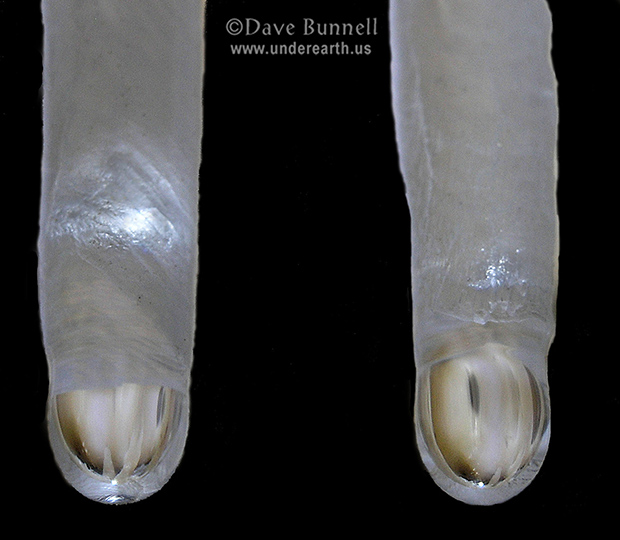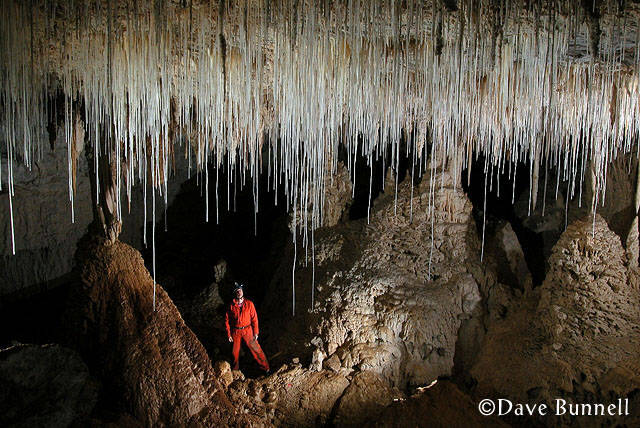
| Soda straws represent
the earliest growth of stalactites.
They are hollow, elongate, generally translucent tubes of calcite equal
in diameter to the water drops conducted along their length. Drops that
hesitate at the growing tip of a soda straw before falling to the floor
lose carbon dioxide to the cave atmosphere and so precipitate some of
the calcium carbonate they carry in solution. This calcium carbonate is
added to the thin blades of calcite that jut downward from the soda straw
growing tip like pointed teeth.
Some soda straws, like those in the
righthand photo, are oddly deflected. Perhaps growth of the straws is
sometimes favored on the windward side of air currents driven by convection,
a chimney effect, moving water, or barometric changes on the surface.
Alternatively, evaporation may cause solution impurities to be incorporated
in the calcite matrix, leading to wayward crystal growth. Few cave formations are as delicate as soda straws, so great care must be taken when moving around beneath ones that are low-hanging. |
![]()



![]()
| Back to: | |
 |
Created: June 19, 1995 Last Updated: May 5, 2005 Author: Djuna Bewley |